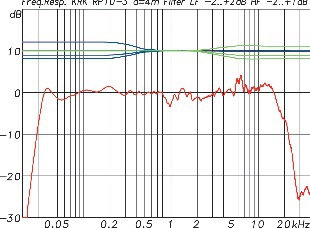dasdoing
Major Contributor
it is probably best described as a "mod" of the g3
https://audioxpress.com/news/krk-systems-introduces-classic-5-nearfield-studio-monitor
“At KRK Systems, our goal is to design solutions that provide users with the freedom to create the most accurate and pristine productions, no matter what genre or environment they’re working in,” says Jimmy R. Landry, Global Director of Marketing, Pro Audio Division, Gibson Brands. “With this Classic 5 studio monitor, we took into consideration what people have always loved about creating music on previous KRK monitors. From there, we zoomed in and fine-tuned certain components to make it an incredibly versatile monitor for music creation, mixing and mastering. With the optional +2dB KRK Bass Boost, the new Classic 5 can hold true to the acclaimed KRK sound that music creators around the world have loved for years.”
https://audioxpress.com/news/krk-systems-introduces-classic-5-nearfield-studio-monitor


